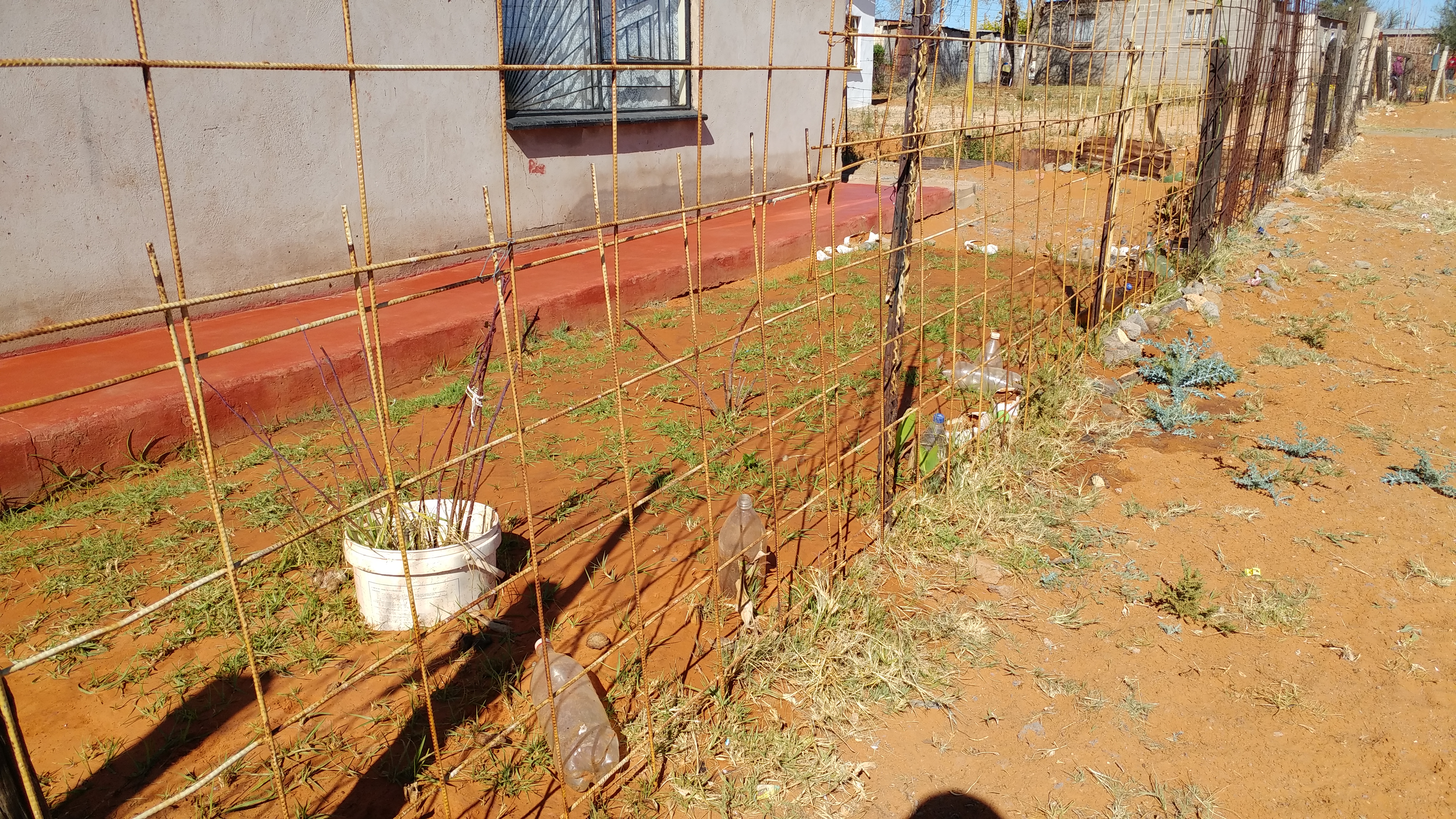The picture is of a garden in rural Northern Cape, South Africa and I dub this picture two litre scarecrows. Bolter and Grusin (2000), Banda and Jimaima (2015) and, to a certain extent, Prior and Hengst (2010) write about semiotic remediation as repurposing. According to Irvine (2010:236), “remediation, in this sense, implies taking up some previously existing form but deploying it in a new move, with a new purpose”. The two-litre soft drink bottles placed on the grass have been repurposed to serve as scarecrows. From the uneven distribution of the grass, it can be concluded that the grass was recently planted. In a bid to ensure that animals such as chickens refrain from eating the growing grass or scratching the soil looking for bugs and insects, two-litre soft drink bottles are used to keep animals at bay. The two-litre ‘scarecrows’ are also meant to deter dogs from defecating on the grass.
In talking about the material culture of multilingualism, Aronin (2015:6) posits that “materialities and spaces are those other kinds of language which are essential and indispensable parts of the semiotic resources of multilingualism”. Two litre scarecrows is an example of how the placement of materialities can ‘speak’ or relay various messages in the ‘absence’ of written inscriptions or oral-narration. The placement of two litre soft drink on the grass is a common, unspoken practice in the Northern Cape. Consequently, the visibility of these two-litre bottles and their interpretation of their presence therefore ‘speaks’ not only to the animals, but also suggests to human beings too not to step on the growing grass.
Two litre scarecrows attest to the reality that meaning making is multimodal in nature and even psychical material artefacts such as two litre soft drink bottles contribute to a multilingual society.

Commentary on Rachel Tanur's Works: African Woman on Road